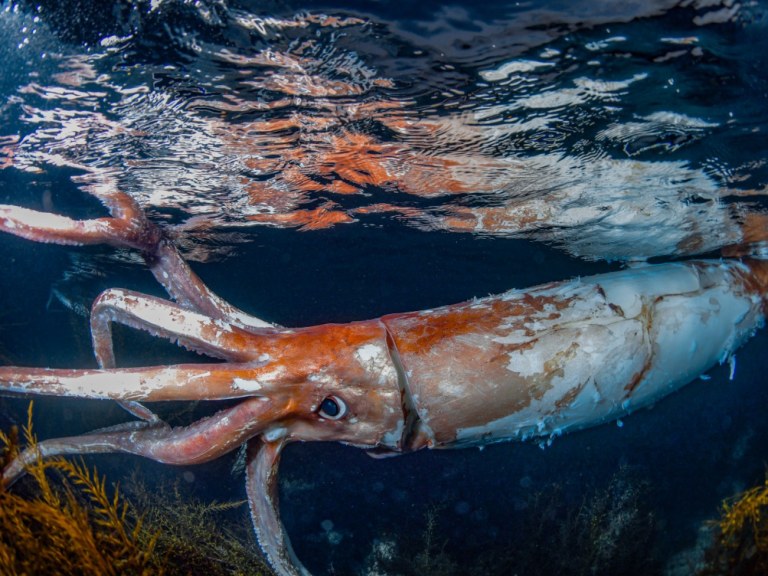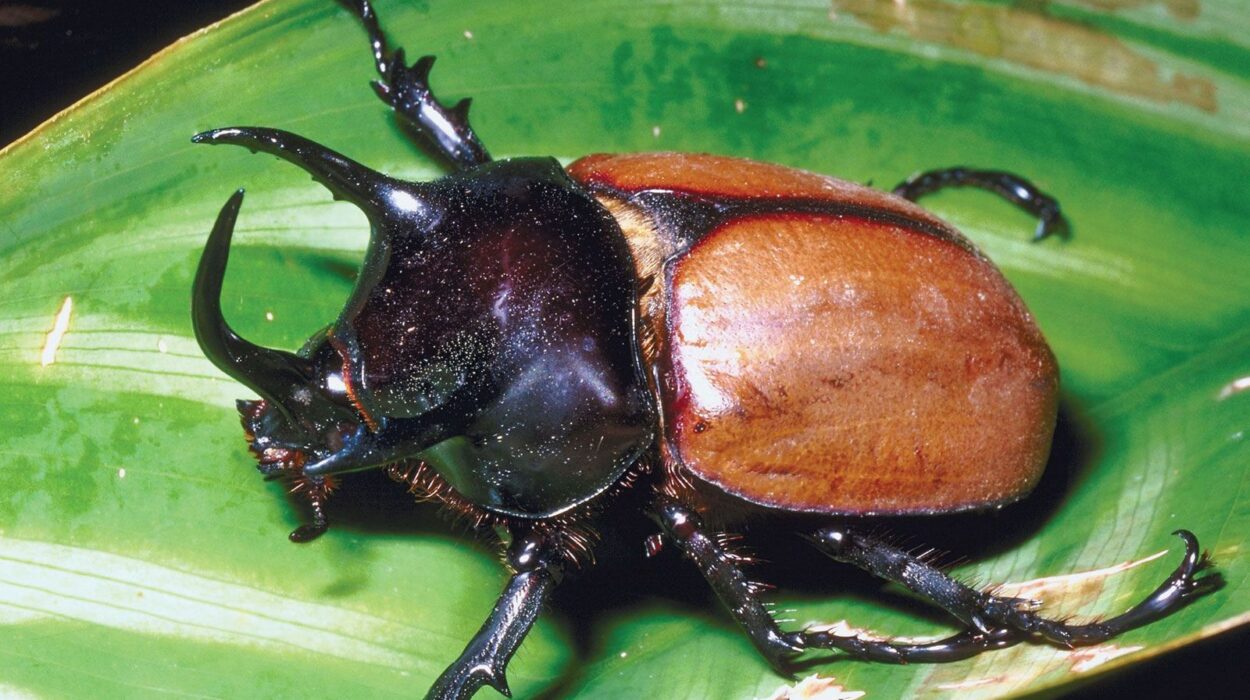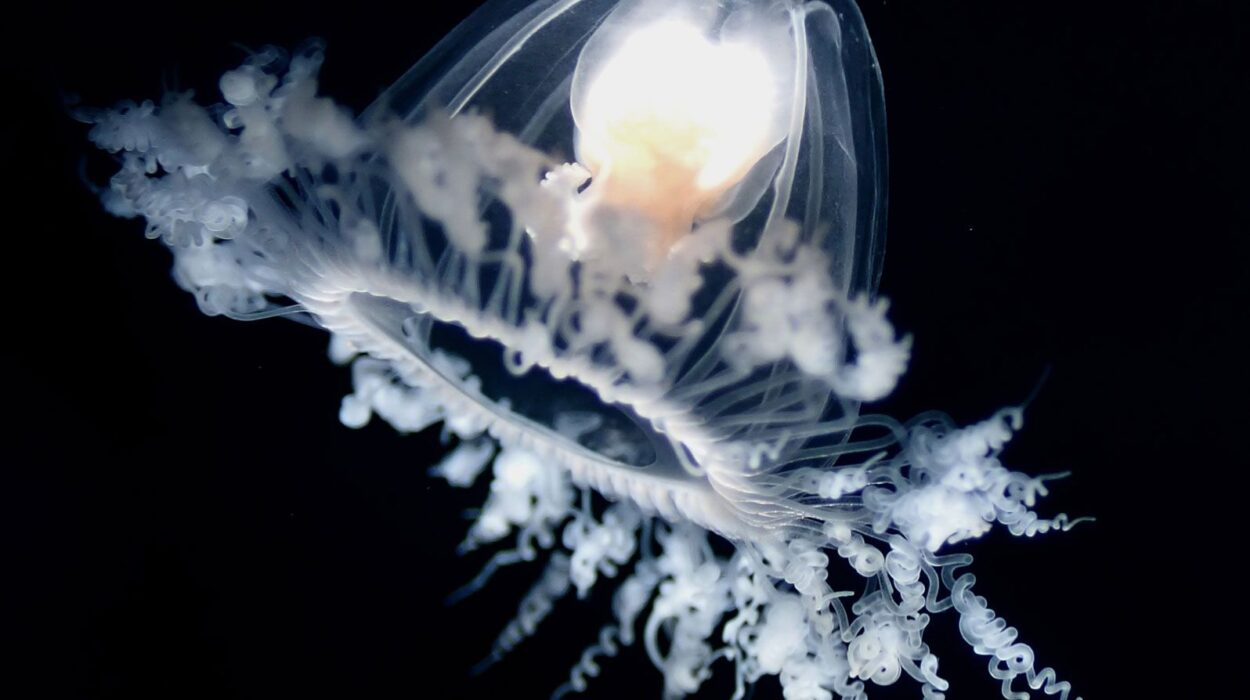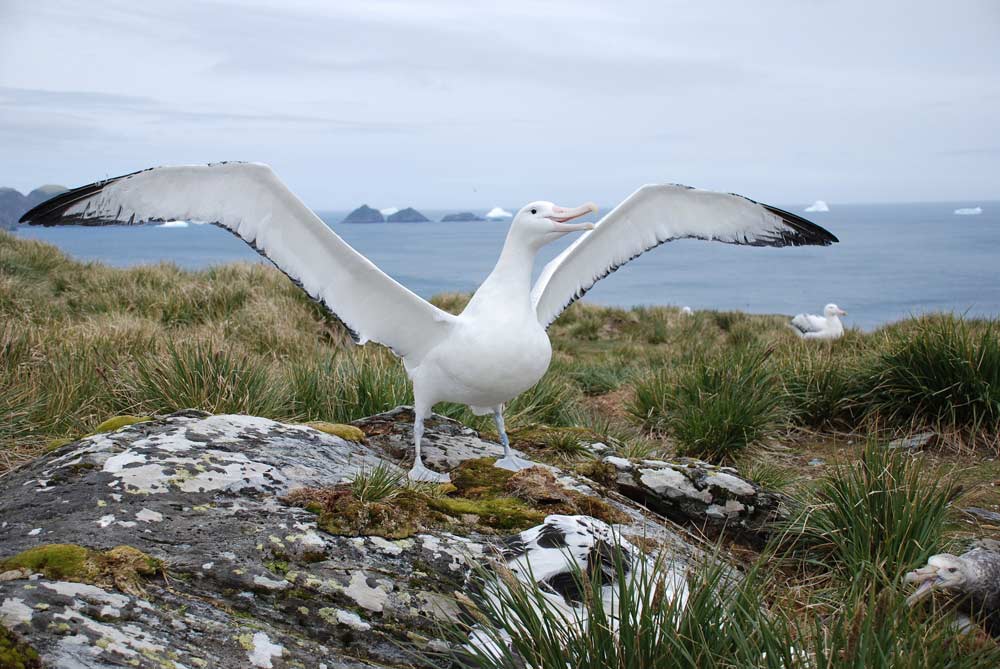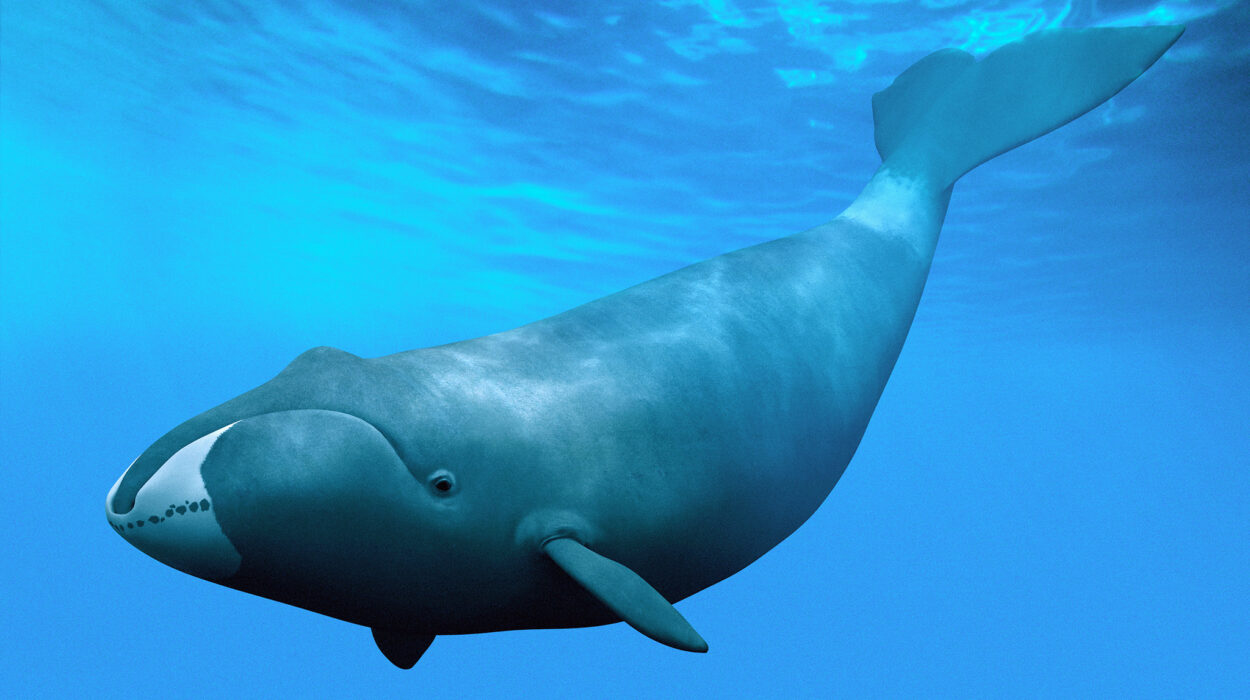The ocean is Earth’s greatest enigma — a boundless realm that covers more than seventy percent of our planet, yet remains largely unexplored. The surface sparkles with sunlight and life, but as we descend, light fades, pressure intensifies, and warmth gives way to an icy darkness. It is a world beyond human comprehension — silent, crushing, alien.
In this vast abyss lie creatures so strange, so hauntingly beautiful and bizarre, that they seem like inhabitants of another planet. The deep ocean is a living gallery of evolution’s wildest imagination, where survival demands ingenuity, and beauty takes forms that defy our expectations.
Here are fifteen of the most mysterious deep ocean creatures ever discovered — beings that challenge everything we think we know about life on Earth.
1. The Giant Squid – The Legendary Leviathan
For centuries, sailors told tales of monstrous tentacled beasts that could drag entire ships beneath the sea. Those legends weren’t far from the truth. The Giant Squid (Architeuthis dux) is one of the largest invertebrates on Earth, growing up to 43 feet long.
For hundreds of years, it remained unseen — a myth woven into maritime folklore — until the first live footage was captured in 2004 off Japan’s coast. Its enormous eyes, the size of dinner plates, are perfectly adapted to the blackness of the deep, detecting even the faintest glimmer of movement.
With eight arms and two long tentacles lined with serrated suckers, the giant squid is a master predator, capable of ensnaring prey with terrifying precision. Yet, despite its power, it remains elusive — a ghost drifting silently in the abyss, rarely seen, never tamed.
2. The Goblin Shark – The Living Fossil
The Goblin Shark (Mitsukurina owstoni) looks like something from a nightmare, and in a sense, it is — a relic from a prehistoric world. Sometimes called a “living fossil,” this shark has changed little over 125 million years.
Its most striking feature is its jaw — a slingshot mechanism that can thrust forward faster than the blink of an eye to snatch prey. When it attacks, its entire face transforms, the jaw jutting out like a monstrous trap.
With its translucent pink skin and flabby body, the goblin shark is perfectly designed for the deep sea’s slow, cold environment. It drifts in darkness at depths of up to 4,000 feet, a ghostly hunter in a world without sunlight.
3. The Vampire Squid – The Shadow of the Deep
Despite its chilling name, the Vampire Squid (Vampyroteuthis infernalis) is more mysterious than monstrous. Its Latin name means “vampire squid from hell,” but this gentle creature feeds not on blood — but on marine snow, a delicate rain of organic particles drifting from above.
Living in the oxygen minimum zone of the deep ocean, where few creatures can survive, the vampire squid thrives in near-anoxic waters. Its gelatinous body glows with bioluminescence, and its cloak-like webbing between its arms gives it the eerie appearance of a creature from gothic fantasy.
When threatened, it turns itself inside out, revealing glowing blue lights along its arms. In the crushing darkness, this light show confuses predators, making the vampire squid vanish into shadow.
4. The Anglerfish – The Deep Sea’s Deceptive Hunter
The Anglerfish is one of the most iconic residents of the abyss. It is the embodiment of deception — a predator that uses its own body as bait.
The female anglerfish possesses a glowing lure, a bioluminescent bulb that dangles from a rod-like spine on its head. It waves this light in the pitch black, mimicking the movement of small prey. When an unsuspecting fish draws near, the anglerfish strikes with lightning speed, swallowing its victim whole.
Perhaps most bizarre of all is its mating ritual. The much smaller male anglerfish fuses permanently to the female’s body, becoming little more than a living appendage. His role: to provide sperm on demand. In the darkness of the deep, love becomes symbiosis, and survival demands unity.
5. The Dumbo Octopus – The Deep Sea’s Gentle Ghost
Named for the ear-like fins that resemble the famous flying elephant, the Dumbo Octopus (Grimpoteuthis) is one of the most charming creatures in the deep. It lives at depths of up to 13,000 feet, where few others dare to go.
Unlike its relatives, the Dumbo Octopus doesn’t use ink — there’s no point when escape routes are limited and darkness is endless. Instead, it glides gracefully through the water using its fins, moving with a slow, ethereal beauty.
Its translucent, gelatinous body shimmers faintly in the dim light, giving it a ghostly presence. It feeds on small crustaceans and worms, swallowing them whole. Among the horrors of the deep, the Dumbo Octopus is a rare vision of innocence — a silent dancer adrift in eternal twilight.
6. The Frilled Shark – The Serpent of the Sea
When the Frilled Shark was first discovered, scientists thought it was a sea serpent. With its eel-like body and prehistoric features, it’s easy to see why. This ancient predator dates back 80 million years and looks like it swam straight out of the fossil record.
Its six pairs of frilled gills give it its name and a haunting beauty. The frilled shark hunts by lunging forward and swallowing prey whole, using over 300 backward-facing teeth arranged in rows.
It can strike with incredible speed despite its sluggish appearance, capturing fish and squid that drift too close. The frilled shark is living proof that evolution sometimes chooses perfection early and refuses to let go.
7. The Giant Isopod – The Deep Sea’s Armored Survivor
Imagine a pill bug the size of a house cat. That’s the Giant Isopod (Bathynomus giganteus), one of the ocean’s most bizarre scavengers.
These crustaceans live in the cold depths of the Atlantic and Pacific, crawling across the seafloor like armored tanks. Their enormous size is an example of “deep-sea gigantism” — a phenomenon where deep ocean creatures grow much larger than their shallow-water relatives.
Giant Isopods survive by scavenging the remains of dead whales, fish, and squid that sink to the bottom. They can go years without food, entering a state of near hibernation. With their eerie eyes and plated armor, they are relics of a world where life endures through stillness and silence.
8. The Barreleye Fish – The Transparent Watcher
The Barreleye Fish (Macropinna microstoma) seems like a creature from science fiction. Its head is transparent, revealing a pair of green, tubular eyes that rotate inside its skull.
This adaptation allows it to stare upward through the darkness, watching for prey silhouetted against the faint light from above. When it spots food — often drifting jellyfish or small crustaceans — it rotates its eyes forward to capture them precisely.
The Barreleye’s delicate body and haunting beauty make it one of the most surreal creatures ever filmed. Discovered in the 1930s, it remained a mystery until modern deep-sea cameras revealed its mesmerizing translucent dome.
It is a living telescope, a biological marvel designed for eternal night.
9. The Gulper Eel – The Elastic Hunter
Few creatures are as bizarre as the Gulper Eel (Eurypharynx pelecanoides). Its most distinctive feature is its enormous, expandable mouth — large enough to engulf prey far bigger than itself.
Its jaw can unhinge like a pelican’s, allowing it to swallow anything it encounters in the deep. The gulper eel’s bioluminescent tail tip glows faintly, possibly used as a lure to attract curious prey.
Living at depths over 6,000 feet, the gulper eel has a body that looks more like a ribbon than a fish. It is the deep ocean’s shapeshifter — a creature that bends the rules of anatomy and physics in the name of survival.
10. The Deep Sea Dragonfish – The Night Predator
With its fang-like teeth and serpentine body, the Deep Sea Dragonfish (Stomiidae family) is one of the ocean’s most efficient predators. It thrives in the pitch-black zones where light never reaches, glowing with its own eerie luminescence.
It uses bioluminescent lures beneath its chin to attract prey. What makes it truly remarkable, however, is its ability to see red light — a wavelength invisible to most deep-sea creatures.
By producing its own red glow, the dragonfish can hunt without being seen, stalking prey with ghostly precision. Its body is sleek and black, almost invisible except for the faint glimmer of light from its lure.
It is a silent assassin in the endless night.
11. The Yeti Crab – The Furry Scavenger of the Abyss
Discovered only in 2005, the Yeti Crab (Kiwa hirsuta) is one of the most unusual creatures ever found near hydrothermal vents in the South Pacific. Covered in silky, hair-like filaments, it appears almost otherworldly.
These “hairs” are not for decoration — they host bacteria that detoxify the poisonous minerals spewed by the vents. The crab “farms” these microbes by waving its claws over the vent plumes, feeding on the bacteria that grow there.
The Yeti Crab’s white, ghostly appearance and its fuzzy arms make it look like a creature from legend. Yet it’s very real — a living testament to evolution’s creativity in even the harshest environments.
12. The Fangtooth – The Monster with a Heart
Few creatures look as terrifying as the Fangtooth (Anoplogaster cornuta). With teeth so large they can’t fit inside its mouth, it seems built for pure destruction. Yet this deep-sea predator is only about six inches long.
Despite its fearsome appearance, the fangtooth is a survivor, adapted to crushing pressure and near-freezing temperatures. It uses its enormous teeth to impale small fish and squid, swallowing them whole.
Its nervous system is incredibly sensitive, allowing it to detect the faintest vibrations. In the silent dark, the fangtooth’s world is defined not by sight, but by touch and instinct.
It’s a reminder that in the abyss, appearances deceive — monsters can be tiny, and terror can be fragile.
13. The Deep Sea Hatchetfish – The Shimmering Phantom
The Hatchetfish looks as if it was carved from glass and silver. Found at depths between 600 and 4,500 feet, this fish uses bioluminescence to survive in one of the ocean’s most hostile zones.
Its body glows faintly along its belly, using a method called counterillumination — light patterns that perfectly match the faint glow from above, making it nearly invisible from below.
With its thin, metallic body and large, upturned eyes, the hatchetfish is built for stealth. It moves silently through the water column, feeding on drifting plankton.
To see one alive is to witness evolution’s poetry — a creature that has turned invisibility into an art form.
14. The Colossal Squid – The Deep’s True Giant
While the giant squid has long fascinated us, the Colossal Squid (Mesonychoteuthis hamiltoni) is even larger and more formidable. Found in the freezing waters of Antarctica, it’s the heaviest invertebrate on Earth, reaching up to 1,500 pounds.
Its tentacles are lined with rotating hooks — a weapon unlike any other in the animal kingdom. Its massive eyes, the largest known in any animal, detect the faintest light, allowing it to hunt in total darkness.
The colossal squid is rarely seen alive, and most knowledge comes from specimens caught accidentally by fishermen. Its existence reminds us that the ocean still keeps giants hidden in its depths — vast beings that defy imagination.
15. The Blobfish – The Accidental Celebrity
Few deep-sea creatures have captured public attention quite like the Blobfish (Psychrolutes marcidus). Living at depths of up to 4,000 feet, where pressure is immense, the blobfish’s gelatinous body is perfectly adapted to the environment.
At those depths, it looks like a normal fish — but when brought to the surface, the pressure difference causes its body to expand and deform, giving it its famously “sad” appearance.
This poor creature became an internet meme, often labeled “the world’s ugliest animal.” Yet in its true home, far beneath the waves, it is a master of efficiency — soft, buoyant, and perfectly suited to the crushing weight of the deep.
The Science of Survival in the Abyss
Every deep-sea creature represents an answer to an impossible question: how do you live without light, warmth, or stable food? Evolution has responded with bioluminescence, gigantism, transparency, and unbreakable patience.
Pressure at those depths can exceed a thousand times what we experience at sea level, enough to crush submarines — yet life not only survives, it thrives. Many deep-sea creatures have flexible, water-filled bodies, allowing them to withstand the immense forces. Others have evolved special enzymes that function even in near-freezing temperatures.
Light, when it exists, is used as both weapon and defense. From the glowing lure of the anglerfish to the invisibility of the hatchetfish, bioluminescence has become the deep’s universal language — a shimmering Morse code in eternal night.
The Final Frontier on Earth
We often look to space for mystery, but the ocean is our planet’s true final frontier. More than eighty percent of it remains unmapped, unobserved, and unexplored. Every new expedition reveals species we never dreamed existed — glowing, shape-shifting, or utterly alien.
These creatures are more than curiosities. They are living reminders that Earth still holds secrets — that wonder is not confined to the stars.
In the silence of the deep, life endures. It glows, it adapts, it creates beauty in the dark. The ocean’s depths are not just home to monsters or myths — they are a living symphony of survival, proof that nature’s imagination is endless, and that the world we think we know is only a surface reflection of something far more profound, mysterious, and alive.
